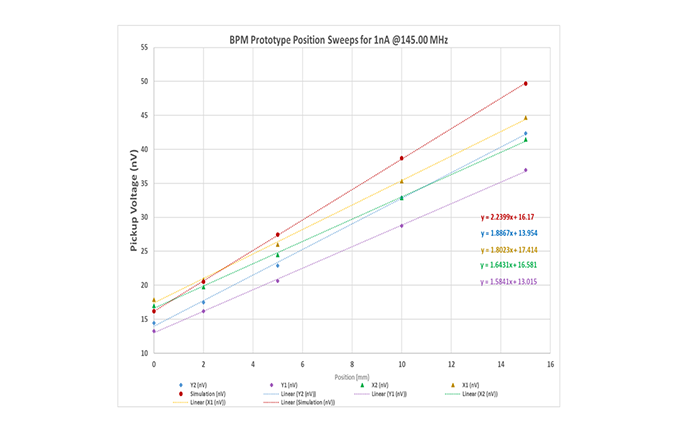PSI beam monitor prototype successfully tested

Low proton beam intensities between 0.1-40 nA are used for medical treatment of tumours at the Paul Scherrer Institute's PROSCAN facility. A beam current monitor as a dielectric-filled re-entrant cavity resonator can be used to measure the beam current down to few hundreds of pA. A new cavity resonator using 4 quadrants matched to the dipole mode resonance is being developed by OMA Fellow Sudharsan Srinivasan to measure beam positions at these low intensities.
In this monitor, the dipole mode resonance frequency of 145.7 MHz is matched to the 2nd harmonic of the beam pulse repetition rate (i.e. 72.85 MHz). The commercial code HFSS was used for an overall optimization of the BPM design and gave insight into important parameters such as optimum pickup position, dielectric dimensions, etc. A prototype monitor was now successfully tested on a dedicated test bench at PSI.
Sudharsan and his OMA supervisor Dr Pierre-André Duperrex demonstrated a very good agreement between test bench results and their simulations. This shows that there is a very good understanding of the design and detailed characteristics of this monitor. In particular Pierre’s background in noise reduction and circuit optimization turned out to be invaluable in the process. Amongst others, it was found that the signal amplitude of individual pickups were different with respect to each other, emphasizing how fabrication and assembly can affect the quality of the measurement.
In a next step, measurements with beam shall be carried out in June 2019.